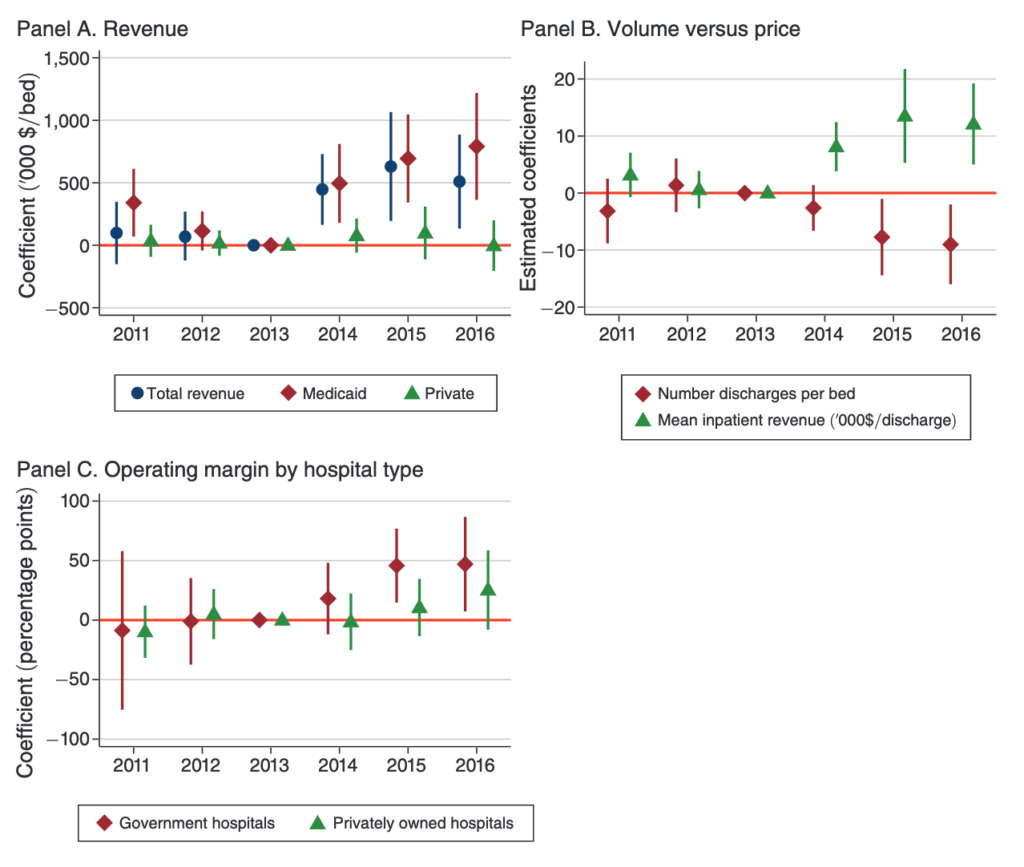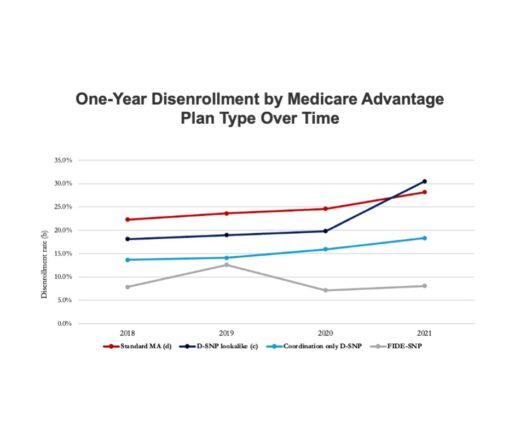Less Postacute Care for Medicare Advantage Beneficiaries Does Not Mean Worse Health
Research Brief: Shorter Stays in Skilled Nursing Facilities and Less Home Health Didn’t Lead to Worse Outcomes, Pointing to Opportunities for Traditional Medicare
Blog Post
Cross-posted from the AEA’s Chart of the Week blog, courtesy of the American Economic Association.
Eight years ago, states began to expand Medicaid coverage as part of the Patient Protection and Affordable Care Act (ACA).
Providing health insurance for low-income Americans was an essential component of the 2010 health care overhaul legislation. Yet many states have not yet elected to expand their Medicaid programs, wary of the impact it will have on their health care markets.
In a paper in the American Economic Journal: Economic Policy, authors Mark Duggan, Atul Gupta, and Emilie Jackson examine how the Medicaid expansion in California affected coverage levels, hospital use, and patient health.

Figure 6 from their paper shows the impact of Medicaid expansion on California hospital finances. Panel A shows a clear increase in total revenue (blue circles, with the vertical bars representing 95 percent confidence intervals) once the expansion was rolled out in 2014. Medicaid revenue (red diamonds) increased while revenue from private insurance (green triangles) did not change noticeably. Panel B shows that these increases were not driven by greater patient volume (red diamonds), but by increased average reimbursements per patient (green triangles).
Finally, panel C looks at the impacts on the operating margin of government-run (red diamonds) and private hospitals (green triangles). Publicly owned hospitals stood to gain more from the Medicaid expansion because they served an outsized share of Medicaid patients. Both publicly and privately owned hospitals had boosts to their bottom lines from the ACA, although as expected, the former experienced greater profitability.
The authors caution that the results of their analysis of data from California may not align with the experience of other states, and that more research is needed to study the long-term effects of the ACA. Still, these findings offer important insights for states determining whether to implement the Medicaid expansion.
The study, “The Impact of the Affordable Care Act: Evidence from California’s Hospital Sector,” was published February 2022 by Mark Duggan, Atul Gupta, and Emilie Jackson in American Economic Journal: Economic Policy.
Research Brief: Shorter Stays in Skilled Nursing Facilities and Less Home Health Didn’t Lead to Worse Outcomes, Pointing to Opportunities for Traditional Medicare

How Threatened Reproductive Rights Pushed More Pennsylvanians Toward Sterilization

Abortion Restrictions Can Backfire, Pushing Families to End Pregnancies

They Reduce Coverage, Not Costs, History Shows. Smarter Incentives Would Encourage the Private Sector
Research Brief: Less Than 1% of Clinical Practices Provide 80% of Outpatient Services for Dually Eligible Individuals

New Findings Highlight the Value of 12-Month Eligibility in Reducing Care Gaps and Paperwork Burdens

Chart of the Day: Fully Integrated D-SNPs Kept These Vulnerable Patients Enrolled, a New Study Finds

Democrats Must Go Beyond Reversing Trump-Era Cuts With a New Strategy to Streamline Coverage, Reduce Waste, and Expand Access to Medicaid